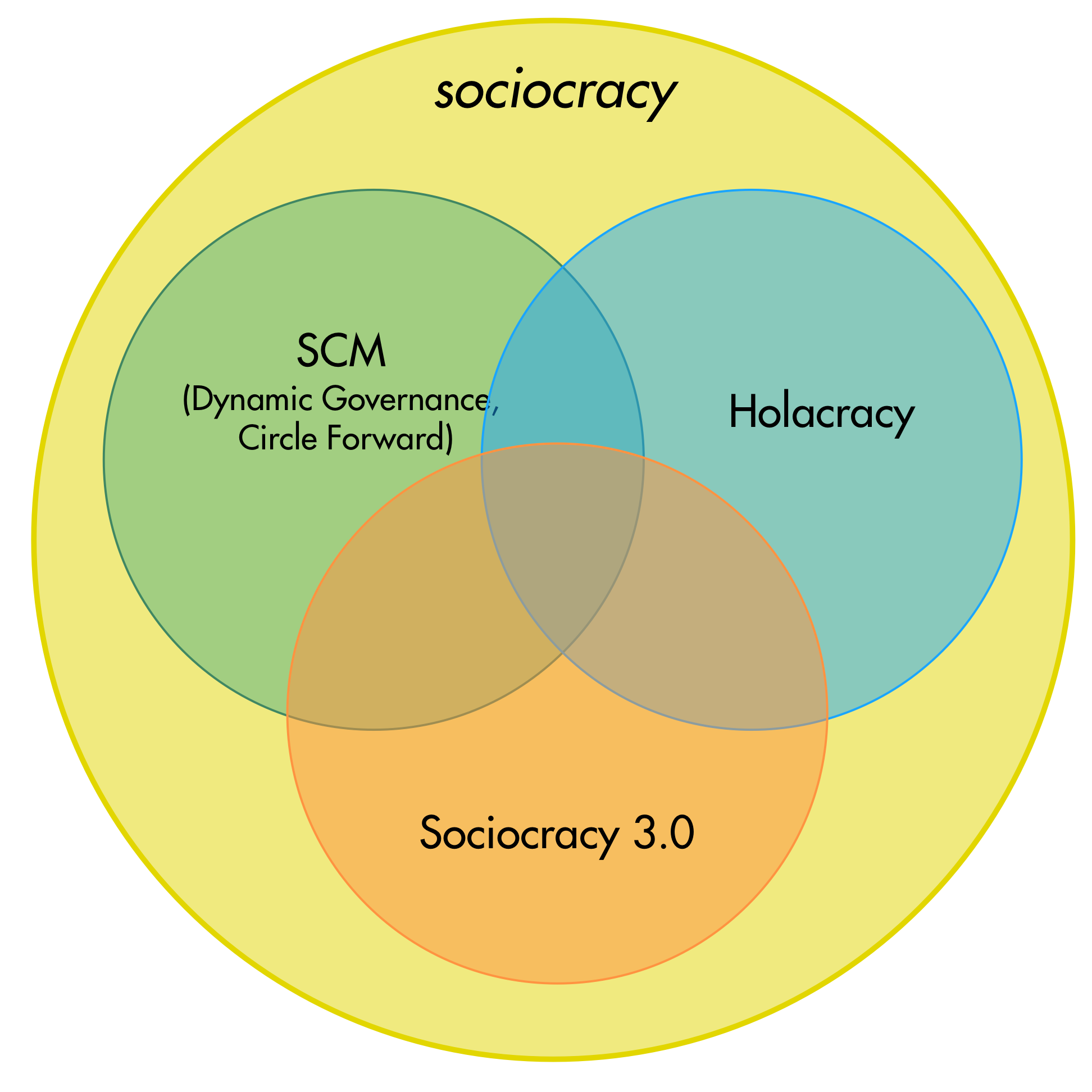When I refer to “sociocracy” with a lowercase ‘s’, I refer to any system of running organizations where power (and decision making) is distributed to all members[^advocats of Holacracy would claim it’s roles and not people] of an organization through the principle of consent, and emergent knowledge is captured and integrated into working agreements[^policy] through objections.
Also, I refer to organizations governed with such a system as “a sociocracy” (as we would refer to some countries as “a democracy”).
Today we have three major flavours of sociocracy (with a lowercase ‘s’):
- The Sociocratic Circle-Organization Method (SCM), as advocated by The Sociocracy Group (TSG), these days they simply call it Sociocracy (with a capital ‘S’). This method is also known as dynamic governance or Circle Forward in the USA1
- Holacracy, a development of SCM by Brian Robertson and HolacracyOne, influenced by agile methodologies and the ideas of Ken Wilber, with the intention to making sociocracy available to the corporate world
- Sociocracy 3.0, developed from both SCM and Holacracy, and integrated with as well as other lean and agile methodologies, in order to make sociocracy (with a lowercase ‘s’) available to as many organizations as possible. S3 is stewarded by the S3 Working Group.
It is a good thing we have a bit of diversity within sociocracy, because through that we can help many more organizations thrive. We could have a bit more exchange, but that is going to change soon.
- some people over there apparently still have strong feelings about any word with the prefix “soci-“ ↩

